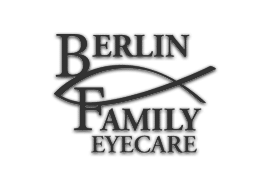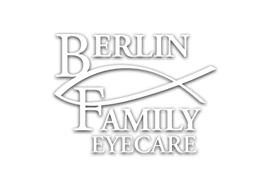Have you ever corrected your child for sitting too close to the TV? Is he or she having trouble paying attention at school? These may not be behavioral issues but instead be related to poor vision. When 80% of the information learned in school is presented visually, poor visual skills can greatly impact the learning process. Visual skills that affect the learning and development process not only include near and distance vision but also, eye teaming skills, eye movement skills, focusing skilsl, peripheral awareness and eye/hand coordination. ? In order to prevent these issues from affecting development and learning, scheduling a comprehensive eye exams throughout childhood is important. Visiting your pediatrician or school nurse for a vision screening may not be enough, since these screenings miss about 60% of children with vision problems. Instead it is best to visit an eye care professional to receive a comprehensive eye exam for a complete evaluation of visual skills. ?When should you schedule comprehensive exams? According to the American optometric association, infants should have their first comprehensive eye exam at 6 months of age. Additionally, exams should be scheduled at 3 years and just prior to entering Kindergarten. Because of the relationship between learning and vision, many states will require an eye exam before entering school. For school age children, those without vision correction should receive an eye exam every 2 years, while those requiring vision correction need an exam annually or at your doctor’s suggested interval. Following a suggested eye exam schedule can lead to early detection and treatment of vision problems to prevent behavioral and learning related issues from developing.
It is estimated 5 to 10 percent of preschoolers and 25 percent of school-aged children have already developed vision problems. Early diagnosis will help protect the learning and development process. Your first line of defense is your optometrist or ophthalmologist. Your child’s first vision exam should be within six months after birth. Due to potential barriers such as inability to communicate or short attention spans, these doctors work with specialized methods developed to best assess your child’s vision. Not only do they test for refractive errors, such as near and far sightedness, but they also administer exams to evaluate ocular alignment and test for the presence of eye disease. ? The longer a vision problem goes undiagnosed and untreated, the more the brain accommodates the problem and the harder it becomes to correct it. Neurological development of vision occurs until age nine; this means if problems such as misalignment and the inability to focus vision go undetected, development may be hindered. Following a recommended comprehensive eye examination schedule can uncover any existing problems early on, leading to prompt treatment and management in order to keep learning and development on track. The American Optometric Association recommends the first comprehensive eye exam to be administered at six months. It is suggested that follow up exams should occur at ages three and five. For school age children an exam is suggested every two years, unless vision correction is required; if this is the case, a child should be examined annually or at your doctor’s suggested interval.Together, we’ll work to ensure your child has the best vision possible.
It is estimated 5 to 10 percent of preschoolers and 25 percent of school-aged children have already developed vision problems. Early diagnosis will help protect the learning and development process. Your first line of defense is your optometrist or ophthalmologist. Your child’s first vision exam should be within six months after birth. Due to potential barriers such as inability to communicate or short attention spans, these doctors work with specialized methods developed to best assess your child’s vision. Not only do they test for refractive errors, such as near and far sightedness, but they also administer exams to evaluate ocular alignment and test for the presence of eye disease. ? The longer a vision problem goes undiagnosed and untreated, the more the brain accommodates the problem and the harder it becomes to correct it. Neurological development of vision occurs until age nine; this means if problems such as misalignment and the inability to focus vision go undetected, development may be hindered. Following a recommended comprehensive eye examination schedule can uncover any existing problems early on, leading to prompt treatment and management in order to keep learning and development on track. The American Optometric Association recommends the first comprehensive eye exam to be administered at six months. It is suggested that follow up exams should occur at ages three and five. For school age children an exam is suggested every two years, unless vision correction is required; if this is the case, a child should be examined annually or at your doctor’s suggested interval.Together, we’ll work to ensure your child has the best vision possible.
Children are more responsive to treatment when problems are diagnosed early, which is why it’s so important to make sure your child has regular comprehensive eye exams. The American Optometric Association suggests that children receive exams at 6 months, age 3 and just before they enter first grade. Contrary to most parents’ fears, preschool-aged children do not need to know their letters in order to undergo eye tests. Your Eyecare Professional is trained to help children who may not be able to communicate if they are having vision problems. A series of tests have been specially developed for young children. The first test, called LEA Symbols, while similar to your standard vision chart with letters, uses special symbols that are recognizable to young children. The Retinoscopy test helps your Eye Care Professional determine the eyeglass prescription if one is needed. Your doctor will shine a light into the child’s eyes and measure the reflection as it hits the retina located in the back of the eye. This helps to determine if a corrective lens is needed to improve vision issues including nearsightedness, farsightedness, or astigmatism. The last test is the Random Dot Stereopsis. For this test, your child will be provided a pair of 3-D glasses and asked to watch special patterns of dots. By observing the progress of the test, it can be determined how well the eyes work together as a team. All of these tests are specially designed to fit the development stages of preschool children and allow your Eye Care Professional to make the best possible diagnosis. Early diagnosis will lead to proactive treatment to ensure your child has the visual skills needed for future success in learning.
Early diagnosis and treatment of vision problems helps set children up for success. According to the American Optometric Association the first exam should be administered at 6 months. Many pediatricians offer eye exams, yet these practices may not have the necessary equipment to properly assess eye health. Therefore, its important to schedule an appointment with an eyecare professional. Since your child is limited in their ability to communicate any problems, your Eye Care Professional has a special tool kit of tests to assess your baby’s eye development. The first test will measure pupillary response, which will determine whether the pupil reacts properly in different light conditions. The second test called the “fixate and Follow” test will gauge how well your baby’s eyes are able to fixate on a single object and follow it as it moves. The ability to fixate on objects should begin soon after birth while the ability to follow the object develops by three months. The last test is called Preferential Looking. Since children at six months are not expected to be able to identify letters or numbers on a typical eye chart, specialized cards with stripes are used to attract your child’s attention. Your eye care professional may perform a retinoscopy, to assess the eye growth pattern and possible refractive errors, such as nearsightedness, farsightedness, and astigmatism. Eye drops may be used to help perform these tests and allow an examination of your child’s eye health Your baby’s first eye exam is an an important step in ensuring optimum eye health and proper development. Remember to schedule your child’s first comprehensive eye exam with an eye care professional as soon as possible.

